An article from Norwegian SciTech News at NTNU
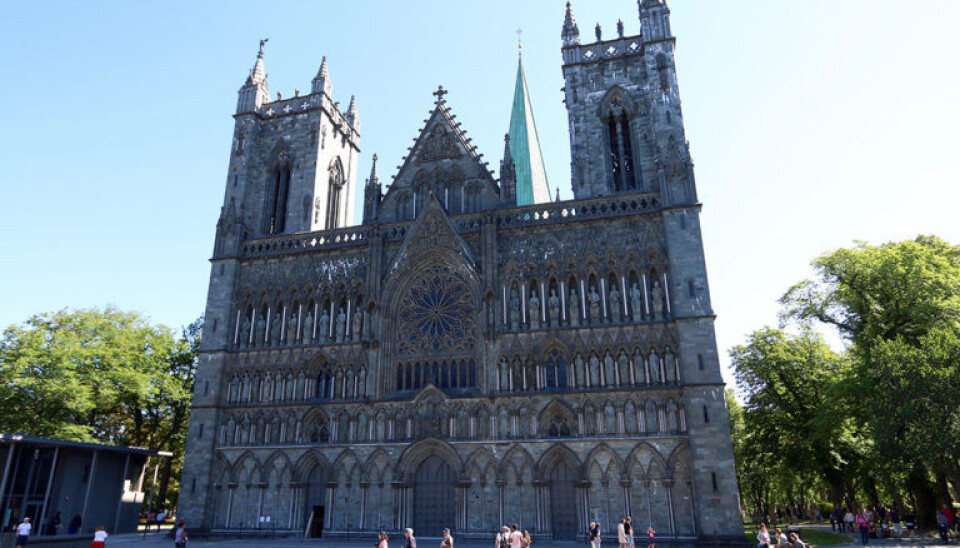
Thousand-year-old cathedral surrenders its secrets
The secrets of St Olav’s shrine and Nidaros Cathedral have drawn pilgrims for nearly a thousand years. Curious researchers have also made the journey, eager to solve the mysteries locked up in the cathedral’s stones.
With its somber soapstone walls, two great towers and a spire reaching for the heavens, Nidaros Cathedral looks solid and sturdy, built to survive the millennia. And when you consider parts of the structure are nearly 1000 years old, you could say it has delivered on that promise.
But this same cathedral has been burned to the ground five times over its long history. Its walls have been built and rebuilt so many times that stonemasons have had to draw their building materials from more than 70 different quarries across Norway.
Stained glass experts are gradually renewing all the lead in the glass windows in the cathedral. The original stained glass work, which dates beginning in the 1870s, is buckling — it’s paying the price for being so far north.
Different entrances and sections have had to be completely dismantled and reconstructed to replace soapstone that was literally crumbling in place. Currently, the King’s Entrance is undergoing a complete rebuild that should be completed by 2019.
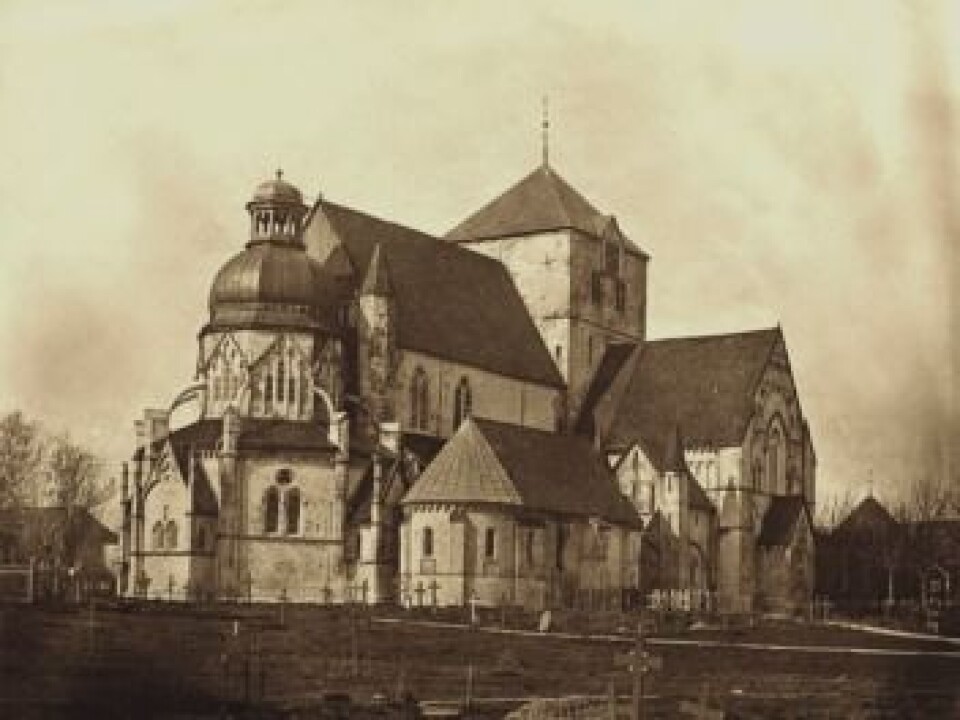
“This is a building that has suffered very much,” says Øystein Ekroll, a medieval archaeologist who came to Trondheim to work on Nidaros Cathedral in 1992. “It is not like cathedrals in Italy or France that have been built and have remained the same ever since.”
Ekroll, who works at the Nidaros Cathedral Restoration Workshop, has studied the cathedral and the stories that are hidden in its stonework for his job, but also for his PhD at NTNU, which he completed in 2015.
And he’s not done yet.
“I will never finish with this building,” he said. “As long as I live there remain many unsolved questions.”
The fine art of erosion
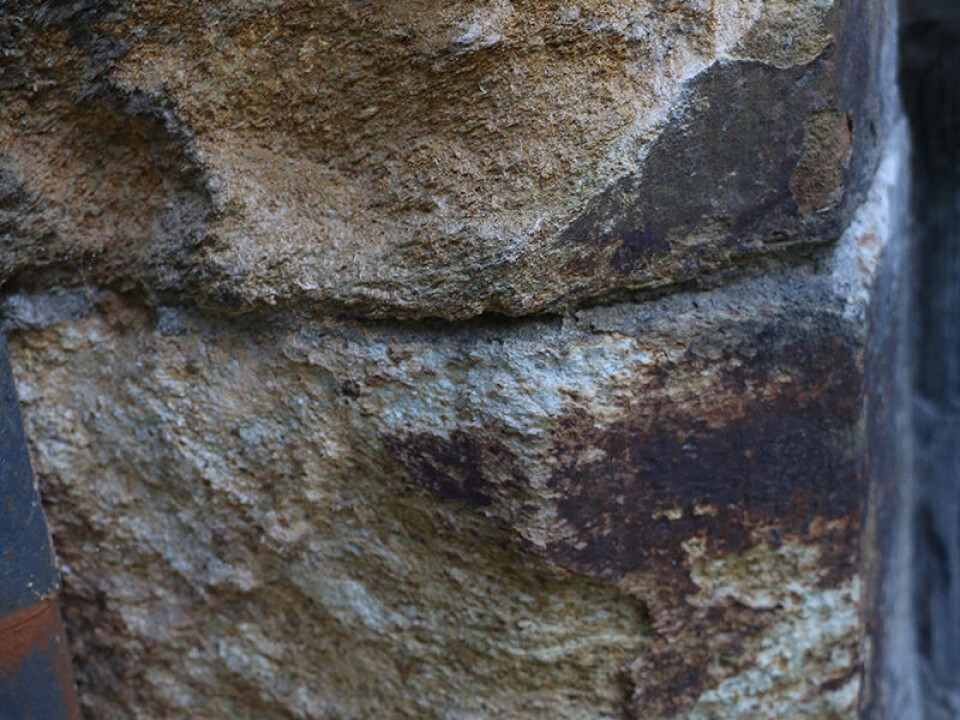
When the German art historian Alexander von Minutoli visited Trondheim in 1835, he reported being impressed by the cathedral, which he called “the most noble monument of the Gothic style.”
As described in an NTNU PhD dissertation by Per Storemyr from 1997, von Minutoli also commented on the durability of the stone itself. “Even moss and lichens had not found a foothold on exterior sculptures,” and the stone “appeared as new.”
Storemyr is a geologist who combined his interest in stone weathering with a fascination for the long history of the cathedral, and the “thousands of skilled and unskilled people (who) had built, restored and rebuilt the church,” as he wrote in his dissertation. He later went on to work at the Nidaros Cathedral Restoration Workshop and now has his own archaeology and conservation consulting service based in Hyllestad in Western Norway.
In a book published in 2015, Storemyr described the more than 70 different quarries that were used over the centuries to build and rebuild the cathedral. He also meticulously documented the different kinds of erosion and weathering that are gradually gnawing away at the cathedral’s ornaments and structure.
A recipe for disaster
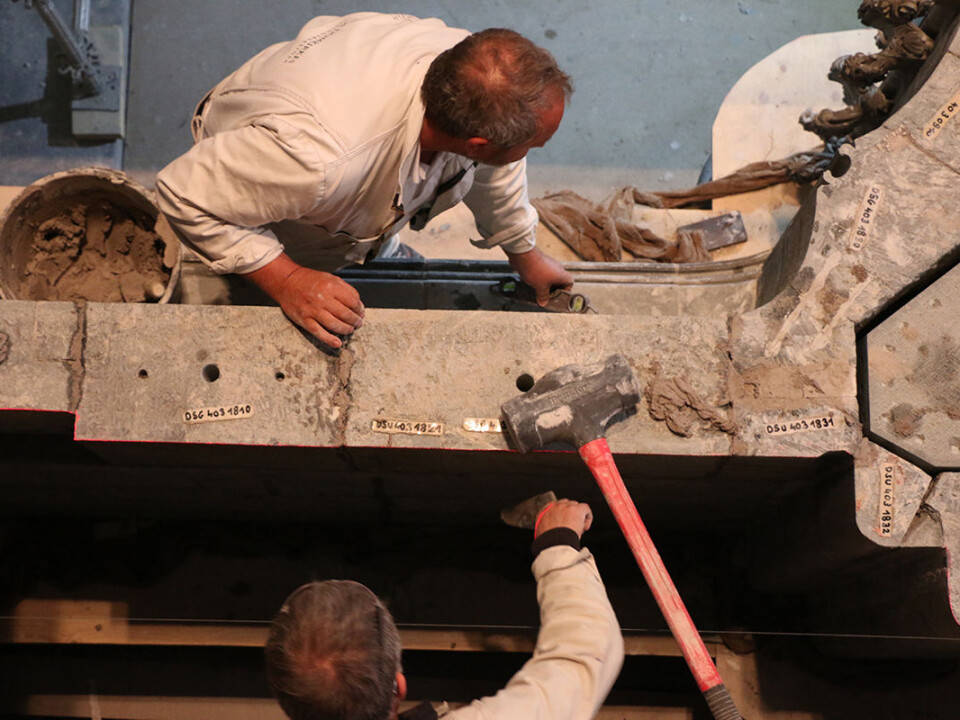
Over its 950-year history, the cathedral has gone through a series of different phases of building and rebuilding. The most comprehensive and visible effort began in 1869, and lasted more than a century.
Unfortunately, however, one of the stones of choice during this 150-year long restoration came from a quarry called Grytdal, about 70 kilometers south of Trondheim. The Grytdal quarry was worked from 1869 to 1892, which made it an important part of the last major reconstruction effort during its earliest phase.
“Known for more than 70 years as the worst stone in the cathedral, Grytdal soapstone is literally ‘rusting to pieces,’” Storemyr wrote in his dissertation.
Ekroll has a more dramatic way to describe the stone. It disintegrates in place, he said, making its use “a recipe for disaster.”
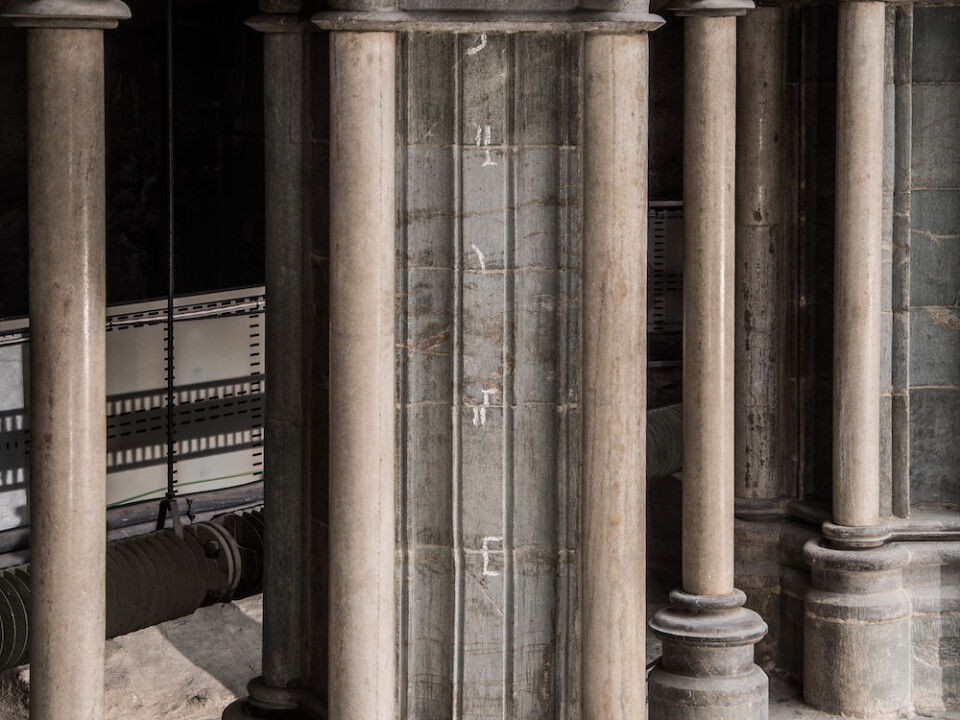
The problem is that the soapstone has a very high sulphide content, which makes it far more susceptible to weathering than many of the other stones used in the cathedral.
The presence of this type of stone in the King’s Entrance is one reason it is being rebuilt now for the third time since the 1870s, but that’s not the only place Grytdal stone has been used. In fact, it is clearly visible in different areas of the cathedral’s choir façade, easily identified by its worn surface.
Stone by stone
Ekroll, of course, knows the whole story of the restoration of the King’s Entrance.
“It was first restored in the 1880s, when it was very much reduced,” he said.
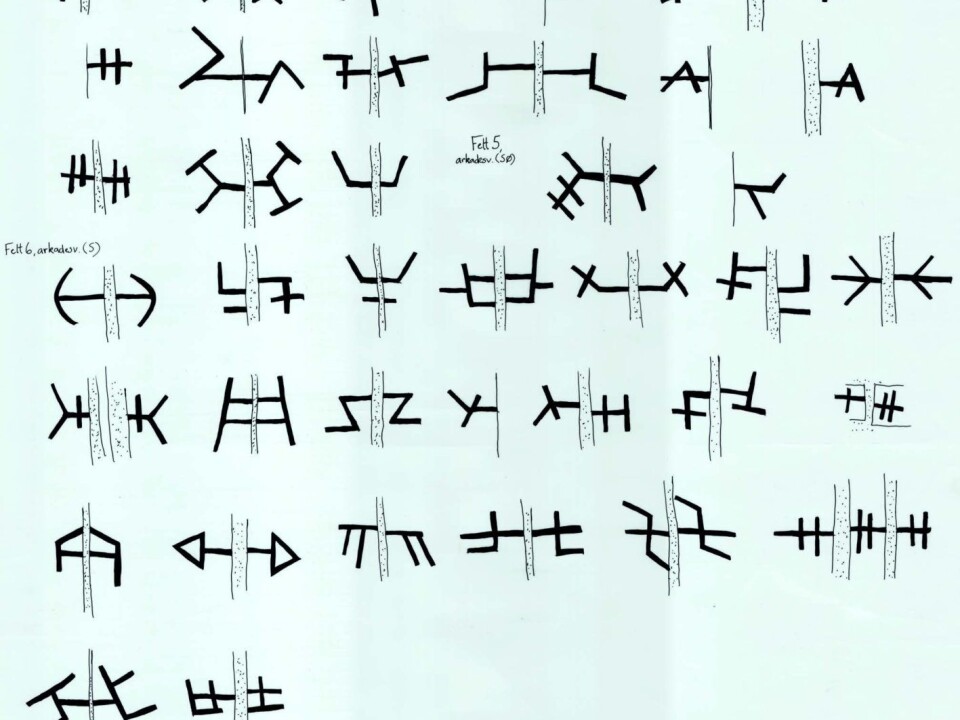
The architect in charge of the restoration from 1872 until 1906, Christian Christie, took down the whole porch and then dug down deep to create a solid foundation, Ekroll said. Christie also added a whole new upper section with pinnacles. The Grytdal quarry was active at that time, so that is the stone Christie used for the rebuild.
By 1920 the Grytdal stone had already started to disintegrate and the King’s Entrance was in a desperate situation. Stone masons added new stone at that time to shore it up, but “they did not get to the core of the rot,” Ekroll said.
It turned out that much of the King’s Entrance walls were rebuilt with Grytdal stone, which meant that no amount of outside support would help.
In 2010, the entire porch was taken down, stone by stone, until the masons had removed 2000 stones. Each stone has been evaluated and is being repaired or replaced if necessary.
“The work is now ahead of schedule and we hope to be finished by 2019, the 150th anniversary of the beginning of the last big restoration,” Ekroll said.
The 1983 fire
Nearly every stone in the cathedral has its own story — whether it’s where it came from, the personal marks of the stone carvers who worked on the stone or the placement of the stone itself.
This history is so important in understanding the building history that when stones are removed from the cathedral, they are carefully numbered and stored as artefacts for future builders and historians to examine.
Unfortunately, this archive of artefacts, the lapidarium, was badly damaged in 1983, when a fire roared through two buildings that contained the collection in the Archbishop’s Palace area, right next to the Cathedral. The fire damaged many stones, and more importantly, destroyed all the plaster casts of sculptures that had been made over the years.
Part of Ekroll’s job involves slowly working his way through the stones that were left after the fire, to try to determine their identity and where they once were located in the cathedral. “I have managed to re-identify about two-and-a-half thousand stones,” he said.
The plaster casts, of course, were a total loss. But here’s where research from another NTNU scientist could help — with a computer tool that could enable researchers to reconstruct sculptures from the bits that were left behind.
Reconstructing history from bits and bytes
In February 2013, Theoharis Theoharis from the Department of Computer Science and the Visual Computing Laboratory and colleagues from Norway, Germany and Greece embarked on an ambitious project called PRESIOUS. The acronym stands for Predictive digitization, restoration and degradation assessment of cultural heritage objects.
The three-year, € 3.5 million project was funded by a grant from the EU, and was focused on providing ICT solutions to help evaluate and rebuild cultural heritage objects, such as the sculptures and other decorations on Nidaros Cathedral.
Theoharis, who was project coordinator, said he was inspired to take on the task because of “the great potential of visual computing techniques in archaeology.”
“As computer scientists we can see some of the problems that archaeologists face, like reconstructing objects from fragments, from the standpoint of algorithmic complexity,” he said. “This allows us to make a difference in this field by helping archaeologists solve problems that were not addressable beforehand.”
One example of this is helping archaeologists to figure out how to piece together thousands of fragments that need to be reconstructed, he said. PRESIOUS developed tools that can use 3-D imaging to create reconstructions of archaeological artefacts from fragments.
Scans of the fragmented objects can also be used to see if the artefact has symmetry that can be used to predict what the missing pieces might look like.
Researchers also looked at how different types of erosion and weathering forces, such as freeze-thaw cycles and salt, affect the different types of stones in cultural monuments like the cathedral.
“Salt-effect weathering was the most damaging for the stones that we studied, based on erosion chamber results,” Theoharis said. This confirmed what Per Storemyr found in his PhD dissertation from 1997.
The project ended in 2016, but Theoharis hopes that the publicly available tools developed by the project will be of use to archaeologists.
Mixed and tangled
Possibly the most important structure in the Cathedral is the Octagon, the eight-sided structure at the easternmost end of the High Choir. It was built starting around the year 1200 around the grave and shrine of St. Olav.
St. Olav is the reason why Nidaros was constructed in the first place, and he remains the most prominent medieval Scandinavian saint.
The Octagon has puzzled architects and historians for the last two centuries, because although it’s known when its construction began, the exact dating and history of how it has been maintained and rebuilt over the years has been nearly impossible to unravel.
Ekroll cites one frustrated historian, Oluf Kolsrud, who wrote in 1914 that “it is impossible to disentangle which part of the Octagon dates from which period; here several styles are so mixed and tangled that the development of the building is impossible to discern.”
As part of his PhD research, however, Ekroll was able to shed light on the inspiration for the Octagon’s design, which was St. Hugh’s Choir in Lincoln Cathedral in the UK. Geologist Per Storemyr, for one, is fascinated by the significance of this find.
“The key to Nidaros Cathedral is that it is an ‘English-style’ cathedral built from the 1070s as the northernmost of Europe’s truly great cathedrals,” Storemyr said. “It shows how international Norway was almost 1000 years ago — a society in the north that had only just concluded its period of Viking expansion and became integrated in the Christian world.”
A royal wedding and a major cleaning
Ekroll’s journey into the details of the Octagon began in 2002, when the Norwegian Princess Martha Louise married Ari Behn.
“These royal occasions tend to loosen the purse strings of the politicians, so we got money to clean up the interior of the choir where the wedding took place, including the screen wall (the magnificent perforated wall between the choir and the Octagon),” Ekroll said.
In 2010, the decision was made to continue this work by cleaning centuries of soot and dust from the entire Octagon interior. The job required erecting scaffolding throughout the whole interior for a period of just three months, from January to April 2011. In 2012, scaffolding was erected section by section on the exterior of the Octagon.
The scaffolding gave Ekroll the chance to systematically study every stone to document mason’s marks and the marks from the tools used to work on the structure.
In total, the 18-metre high structure contains between 20,000 and 30,000 stones, and studying them posed something of an acrobatic challenge, Ekroll said. Nevertheless, he persevered.
“I have studied every stone, yes,” he said.
Symmetrical figures like hieroglyphics
A key aspect of piecing together the history of the Octagon lies in the 2228 mason’s marks that Ekroll catalogued as part of his work. Mapping these mason’s marks made it “possible to follow the working lives of generations of individual stonemasons,” Ekroll said. “It was invaluable for me to do this hands-on work, as I got an intimate knowledge of the stonework.”
In the end, this careful attention to mason’s marks and other related markings gave Ekroll the clues he needed to finally solve the mystery of the Octagon.
At the centre of this puzzle is Archbishop Erik Walkendorf, who served from 1510 to 1522 as the archbishop of Nidaros. For many, many years, historians believed that the Octagon we see today was completed in the early 13th century, Ekroll said, with only a little work done on the structure after the 1328 fire. Although historians knew that Walkendorf had done some work on the Octagon, they thought his contributions were only minor.
But when Ekroll climbed the scaffolding into the uppermost reaches of the Octagon and started looking carefully at all the stones, he found marks that went across the joints between two stones, “like a symmetrical figure,” Ekroll said. “They looked like hieroglyphics.”
He also found Roman numerals carved lightly into stones, which Ekroll saw were used by masons when they disassembled the structure, so they could reassemble the stones in the correct order. “Stone number one was on top,” he said. “They were taking it apart.”
This in itself was not entirely new. “People had noticed some of this before,” he said. “But they thought it was just patchwork repairs, no one envisioned that it was on a much larger scale.”
The mistake that solved the puzzle
And then, up in the gallery, Ekroll found something very odd. Some of the strange marks, the ones that looked like hieroglyphics, were wrong. They didn’t match up correctly.
“We had these marks going across the joints of the piers, but they were in the wrong order,” Ekroll said. “They had been mixed up.”
And because the stones were up high, not visible from below, and in an area where the stones were identical, the masons probably figured it didn’t matter if they were out of order.
While this may not seem like a huge breakthrough, it clearly shows that the piers had been dismantled and put back together again —albeit with a few mistakes. In the end, Ekroll was able to show that five of the eight sides of the central room had been dismantled from the very top and down to the floor and rebuilt in identical form. Other parts had been rebuilt in the old style, too, like parts of the ambulatory screen wall and the gable walls of the protruding chapels.
“The top vault was probably cracking and pressing the walls outwards, so they had to take it down to prevent the vault from collapsing and destroying the whole building,” he said. “But why didn’t they just tear down the whole thing and rebuild it? Why did they do this work that was so well done that people didn’t notice for 500 years that it had been done?”
Hundreds of stones and a tiny door
To understand why Ekroll found the reconstruction so puzzling, you have to realize how much work was involved in disassembling the Octagon and reassembling it again.
“It was terribly complicated,” he said. “They had to transport hundreds, perhaps thousands of stones out through a small opening and then back in again. It would have been much easier to tear down the whole Octagon and build something modern.”
Ekroll believes that the well-educated, well-travelled Walkendorf, whom he calls a “Renaissance man,” wanted to preserve the history embodied in the Octagon, rather than replace it.
“He had a martyr’s grave and a shrine for a martyr. St Olav was the reason why the archbishopric existed at all, and gave the archbishop his legitimacy as leader of the Norwegian church and the Council of the Realm” he said. “Age was now becoming a great asset. There was a growing consciousness at the time that some things were so old and venerable that they should be preserved because of their age, and that making things look old was better than making things that look new.”
That, Ekroll says, is why, when faced with the necessity of rebuilding the structure, Walkendorf chose to restore the Octagon exactly as it had been first constructed.
“It was so successful that it took exactly 500 years before somebody noticed,” he said. “It’s not that it was waiting for my genius, but I was the first building archaeologist who had the possibility to study the Octagon in total.”
“Gud i Himmelen Ser Ditt Arbeid”
Ekroll finished his PhD in 2015. His defense was attended by more than 200 people, who crowded into the choir of Nidaros Cathedral to listen to him tell the tale of the Octagon and the mislaid stones that revealed its 500-year-old secret.
That’s not the only big event in Ekroll’s life, however: In 2017, he celebrated his 25th anniversary as an employee at the Nidaros Cathedral Restoration Workshop.
“Originally I was going to stay for five years, but now I have been here a quarter-century,” he said. Every workshop employee who passes this particular milestone is given a pewter plate engraved with the workshop’s motto: “Gud i Himmelen Ser Ditt Arbeid” — “God in Heaven sees your work.”
He looks forward to many more years uncovering the secrets hidden in the cathedral’s stones. “It is a tremendous product of human beings,” he said. “It is a living building.”
Take a peak behind the scenes of the Nidaros Cathedral Restoration Workshop as they rebuild the King’s Entrance:
https://youtu.be/wP1ZBpZlMAI





































